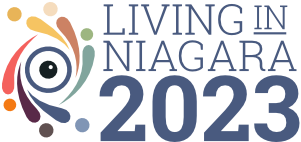Only 2.5% of those in Niagara report taking public transit to work. Buses were also used for purposes other than work. Bus transit is operated within each municipality and the number of Bus transit is operated within each municipality and there are at total of 44 fixed routes and service areas covered in 2006.in Niagara.
Table 3 Information on Bus Transit in Municipalities in Niagara, 2006
|
|
Service Area km2 |
# of Fixed Routes |
Adult Cash Fare |
Ridership (passenger revenue) |
Operating Expenses |
|
Fort Erie |
168 |
1 |
$2.00 |
$23,243 |
$139,653.00 |
|
Welland |
86 |
11 |
$2.25 |
$371,776 |
$2,045,546.00 |
|
Niagara Falls |
80.91 |
11 |
$2.25 |
$1,746,647 |
$5,406,194.00 |
|
Port Colborne |
40.5 |
1 |
$2.00 |
$5,860 |
$152,165.00 |
|
St. Catharines |
not provided |
20 |
$2.25 |
$4,752,760 |
$11,950,611.00 |
In Niagara, Para-transit and Ontario Patient Transit (OPT) services are operational. Cancer Society and March of Dimes offer transportation to patient appointments. In 2007, Niagara Specialized Transit was operationalized. While a majority use the specialized transit for medical reasons, its use for education and work is increasing. Users are often accompanied by assistive devices; wheelchairs mostly.
Table 4 Niagara Transit Ridership Data 2007, 2008
|
Municipality |
% of NST Regional rides for 2007 |
% of NST regional rides up to the end of May 2008 |
|
Niagara Falls |
31.17 |
39.1 |
|
St. Catharines |
1.79 |
.9 |
|
Thorold |
3.38 |
.1 |
|
Welland |
14.74 |
13.0 |
|
Port Colborne |
1.62 |
3.5 |
|
West Lincoln |
.82 |
1.6 |
|
Wainfleet |
0 |
0 |
|
Fort Erie |
11.1 |
12.0 |
|
NOTL |
11.9 |
7.7 |
|
Grimsby |
16.3 |
15.2 |
|
Lincoln |
4.8 |
4.4 |
|
Pelham |
2.32 |
2.0 |
Specialized transit use in Niagara increased by approximately 165%. (Jan. to May 2007/2008). When prorated to December 31, 2008, 8,772 rides may be used in 2008. Niagara Falls had the greatest ridership with 1,429 of the yearly rides, or 39% of the rides.
Source: http://www.regional.niagara.on.ca/government/initiatives/nst/default.aspx
Rating: 2



